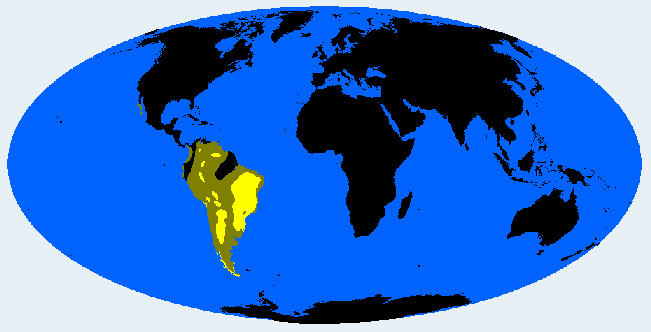Description:
Ancient group of South America, indigenous to mountains, steppes, and coasts from Brazil to Patagonia. Sporadically in forest groups. Possibly the most ancient Native American type. Arrived with one of the first migrations to America during the Paleolithic. Lagid skulls are often long with robust facial features, deep-set eyes below supraorbital arches, broad zygomatic arches, low-rooted, sometimes concave nose, chin slightly receding, hair wavy or straight, skin yellowish/copperish brown. The Lagid proper, or Lagoa Santa type, is high-skulled, low-faced, and broad-nosed. The second Lagid subgroup is the Fuegid, distinguished by low skulls, higher faces, and narrower noses. Fuegid subvarieties include South Fuegids, Huarpids, and the Botocudo type. Some authors don't include Fuegid in Lagid. All Fuegid varieties are close to extinction today due to European colonisation. The Lagoa Santa type still has several relict groups.Names:
Lagid (Eickstedt, 1937. 1952; Canals-Frau, 1950; Lundman, 1943; Vogel, 1974; Knussmann, 1996), Tierra del Fuego (Debets, 1974), Semi-Marginal (Alexeev, 1979), Paléo-Amérindienne (Vallois, 1967), Paléo-Amérind (Montandon, 1933), Ostbrasilid (Drexel, 1955), Lagid + Fuegid (Canals-Frau, 1950; Imbelloni, 1958; Biasutti, 1967).





